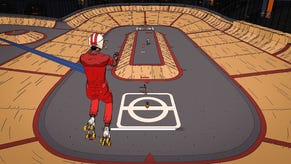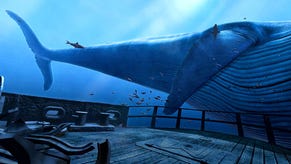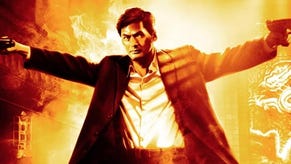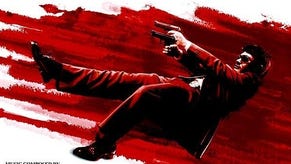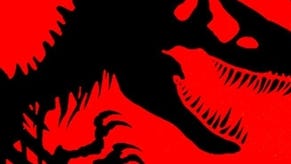Retrospective: John Woo's Stranglehold
When doves fly.
On top of all that Stranglehold layers on power-ups, known as Tequila Bombs. These are earned with really fancy murder. The first simply allows you a health boost, while the second gives you an after-touch sniper shot the designers would really like you to use in order to steer bullets into enemies' nuts.
The third and fourth are a lot more fun. Barrage sees you overcharging your weapons to become a demented bullet-spewing freight train of well-coiffed justice. The Spin Attack represents John Woo's entire approach to character development, exposition, theme, emotion and montage all rolled into 15 seconds.
You turn on the spot, lead sings through the air, enemies fall over and doves take to the skies. Doves. Even when you're indoors. It's brilliant and effective and insane and hilarious.
Stranglehold also chucks you through a series of lovely environments, ripe for being transformed into kindling. All of them fit with the fiction - there are slums, temples and a "Mega Restaurant" where you must hold off waves of gun-toting loons and at least two speedboats which pop through the walls. There's even a museum where you can sprint smartly along the spine of a dinosaur as you fire off shots, earning an Achievement for your troubles.
Yes, many of the game's levels go slightly awry, prodding you into dull bottlenecks or piling on drab objectives and difficulty spikes. But just as many showcase excellent racing-line shooter design, highlighting railings, telegraph poles and bannisters you might want to chain together, while stringing groups of enemies out beneath teetering piles of heavy boxes you can bring down on their heads.
I remember riding a tea-trolley through the Chicago level for what seemed like a decade, twisting and turning as enemies kept spewing out of doors and Ming vases whispered, Smash me, Christian! Bust me to tiny little pieces like that guy in the old Prudential advert did.
The vases are only the tip of this particularly chintzy iceberg, of course. Everything in Stranglehold comes apart under gunfire as the game threads you through places that are either endearingly rickety or hilariously dainty. Want to shoot up place settings, coffee urns, fish tanks, ice sculptures, marble statues, one-armed bandits and plate glass windows? Not a problem.
In the end, Stranglehold's best level is probably the first. It takes you on a deadly jaunt through a Hong Kong Marketplace, surrounded by flickering neon and Demo Fruit (a peculiar form of plant life that only flowers in the early days of a hardware generation, when developers are trying to show off how much havoc, and how much Havok, they can cram on screen at any one time).
Here's where the game really feels like a John Woo movie, where cash registers burst, trays fly off tables, and concrete barricades splinter under heavy fire. It's capped with an idiotic boss fight, sure, but not before it's restaged the tea room scene from Hard Boiled - leaving the same gritty taste of brick dust and plaster hanging in the air afterwards.
So yes, Bulletstorm and its ilk have embellished the template. But I still wish the economics of gaming would allow for more of this kind of thing.
If Cliff Bleszinski's GDC talk was right, and all the market will now support is top-tier triple-As or smart indie offerings, this is the sort of game we're going to miss out on: middling guilty pleasures that are never going to land at number one in the charts or win accolades from the IGF, but that remain perfect for putting on whenever you've had a hard day at the cracker factory and would really like to blow somebody's face off.
I want more of Inspector Tequila, more ducking and diving between fruit market stalls and propane tanks. More games which take delight in blending trashiness with precision. More sequels which could've chosen the direct-to-DVD route, but somehow decided to opt for the direct-to-game path instead.

